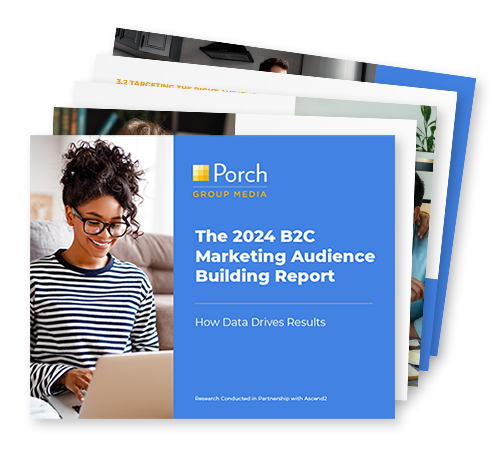Customer experience is more important than ever – 77% of brands believe CX is a key competitive differentiator. In fact, 86% of consumers would leave a brand after as few as two poor experiences. They are also willing to pay for a great experience – 61% of consumers will pay at least 5% more if they know they’ll get a good customer experience.
Understanding the different paths to purchase and various types of customer journeys is essential to create personalized and seamless experiences. From initial discovery to post-purchase engagement, each journey has its unique characteristics and touchpoints.
What is Customer Journey Mapping?
Customer journey mapping is the process of visualizing the steps a customer takes when interacting with your brand, from initial awareness through the purchase journey and post-purchase engagement. It helps you gain a holistic view of your customer’s experience and enables you to align your marketing efforts to enhance that experience.
The Role of Data in Customer Journey Mapping
Data is the lifeblood of effective customer journey mapping. To create an accurate and insightful map, you need to leverage various types of data, including:
- Customer Interaction Data: This encompasses data from touchpoints like websites, mobile apps, social media, email, customer support interactions, and physical store visits. It provides a comprehensive view of customer behavior.
- Customer Feedback and Surveys: This includes feedback from customers through surveys, reviews, and feedback forms. This qualitative data helps uncover customer sentiments and pain points.
- Analytics and Metrics: Utilize web analytics, conversion rates, and engagement metrics to gain insights into how customers navigate your digital channels.
- Sales and CRM Data: Information on customer demographics, purchase history, and communication preferences can enrich your understanding of each customer’s journey.
6 Types of Customer Journeys
1. The Acquisition Journey
- Initial Discovery: This journey begins when a potential customer first becomes aware of your brand, often through marketing channels such as social media, search engines, or advertising.
- Research and Consideration: Consumers delve deeper into your offerings, comparing products or services and reading reviews. Businesses can influence this phase through informative content and targeted advertising.
- Conversion: The culmination of the acquisition journey is when a prospect becomes a customer by making a purchase or taking a desired action.
2. The Onboarding Journey
- First Impressions: After acquiring a new customer, the onboarding journey focuses on making a positive first impression. It involves welcoming messages, setup guides, and providing the necessary resources to get started.
- Education and Engagement: Businesses should educate customers on how to use their product or service effectively. Providing training materials, tutorials, and proactive support can enhance the onboarding experience.
- Feedback and Improvement: Encourage new customers to provide feedback, which can be invaluable for refining your onboarding process and addressing any pain points.
3. The Engagement and Retention Journey
- Continuous Engagement: In this journey, brands strive to keep customers engaged and informed. This can involve regular communication, personalized content, and loyalty programs.
- Customer Support: Responsive customer support plays a crucial role in retaining customers. Addressing issues promptly and efficiently can prevent churn.
- Upselling and Cross-Selling: Identify opportunities to offer additional value to existing customers, such as upgrading to premium services or purchasing related products.
4. The Post-Purchase Journey
- Confirmation and Satisfaction: Customers should receive confirmation of their purchase and, ideally, express satisfaction with their decision. This reaffirms their choice and sets the stage for future interactions.
- Post-Purchase Support: Offer ongoing support, warranties, and maintenance services as needed. This demonstrates your commitment to customer satisfaction beyond the initial sale.
- Feedback and Advocacy: Encourage satisfied customers to provide testimonials, reviews, or referrals. Their positive experiences can attract new customers and enhance your brand’s reputation.
5. The Loyal Customer Journey
- Nurturing Loyalty: Focus on maintaining and deepening the relationship with your most loyal customers. Personalized offers, exclusive access, and special rewards can strengthen their loyalty.
- Advocacy and Brand Ambassadors: Loyal customers may become advocates for your brand, actively promoting it to their networks. Recognize and reward their advocacy efforts.
- Feedback Loop: Continue to seek feedback and insights from your loyal customers to ensure their needs are met and to adapt your strategies accordingly.
6. The Churn and Reacquisition Journey
- Identifying Churn Signals: Monitor customer behavior for signs of disengagement or dissatisfaction. Early detection allows for proactive intervention.
- Win-Back Strategies: Develop win-back campaigns to re-engage lapsed customers. Offer incentives, showcase product improvements, or address previous pain points.
- Learning from Churn: Analyze the reasons behind churn and use this information to refine your offerings and prevent future customer loss.
Conclusion
Navigating customer journeys is a multifaceted task that requires a deep understanding of customer needs and preferences at each stage. By recognizing the different types of customer journeys and tailoring your strategies to address them effectively, brands can create exceptional experiences that foster loyalty, advocacy, and long-term success.





